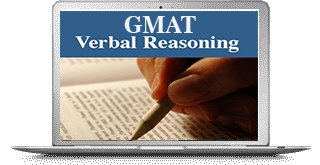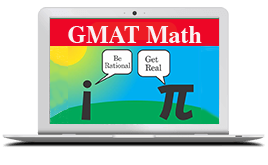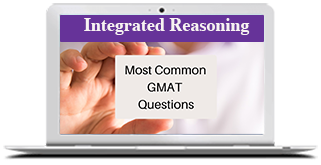The New GMAT Overview
The GMAT changed in 2018. The Quantitative Reasoning Section dropped from 37 questions in 75 minutes to 31 in 62 minutes. The Verbal Reasoning Section dropped from 41 questions in 75 minutes to 36 in 65 minutes. GMAC has elected to reduce overall exam time from 4 hours to 3.5 hours (including breaks and instructions) by reducing the number of unscored questions used for research on the exam.
The GMAT now consists of 4 sections:
Learn everything your need to know about the GMAT Graduate Management Admissions Test, including new content, question breakdown by topic, and scoring scale, and see how these changes will impact you and your chances for admission to business school.
Verbal Reasoning Section

The section of the GMAT exam consists of 36 multiple-choice questions. It measures your ability to read and comprehend written material, reason and evaluate arguments, and correct material to express ideas effectively in standard written English. You will have 65 minutes to complete it. There are three types of questions:
i. Sentence Correction
ii. Critical Reasoning
iii. Reading Comprehension.
The test is adaptive, meaning that each question is assigned a difficulty level, and you will be presented with questions based on your performance on the previous question. The score will also change based on your performance throughout the exam instead of being scored at the end. Because of time mismanagement, it is detrimental to miss many questions at the end of the exam.
Quantitative Reasoning Section

The Quantitative Reasoning section of the GMAT exam measures your ability to reason mathematically, solve quantitative problems, and interpret graphic data. It consists of 31 multiple-choice questions. You will have 62 minutes to complete it. You cannot use a calculator while working on the Quantitative section.
There are two types of questions in the Quantitative Section:
i. Problem Solving
ii. Data Sufficiency.
Both types of questions require knowledge of arithmetic, elementary algebra, and commonly known geometry concepts. Rest assured that the difficulty of the questions stems from the logic and analytical skills required rather than the underlying math skills.
Analytical Writing (AWA) Section

The Analytical Writing section on the GMAT (often referred to simply as the AWA) gives the test taker 30 minutes to type an analytical essay, critiquing and evaluating a flawed argument (along the lines of a CR Weaken argument).
Note that the AWA score is not factored into the general GMAT score out of 800. Instead, it is a separate score, wherein the test-taker earns points on a scale of 0 to 6, moving in half-point increments (0-0.5, 0.5-1, 1-1.5, etc.). Both a computer and a human will evaluate and grade your essay, and you'll receive your AWA score, along with your official scores from GMAC, any time within 15 days of taking the exam.
Integrated Reasoning Section

The Integrated Reasoning section of the GMAT exam tests skills that business schools have identified as important for your success in the classroom, such as your ability to analyze data presented in a case study. Employers value business leaders who can sort through copious amounts of data and determine what is relevant before incorporating it into strategic solutions.
You will have 30 minutes to solve 12 questions of four types: Multi-Source Reasoning, Table Analysis, Graphics Interpretation, and Two-Part Analysis.
There are four types of questions in the Integrated Reasoning Section:
i. Multi-Source Reasoning
ii. Table Analysis
iii. Graphics Interpretation
iv. Two-Part Analysis.
Many questions require more than one response, and you can access an online calculator with basic functions. Because the questions are designed to test your ability to integrate data to solve complex problems, you must answer all responses to a question correctly; no partial credit will be given.












